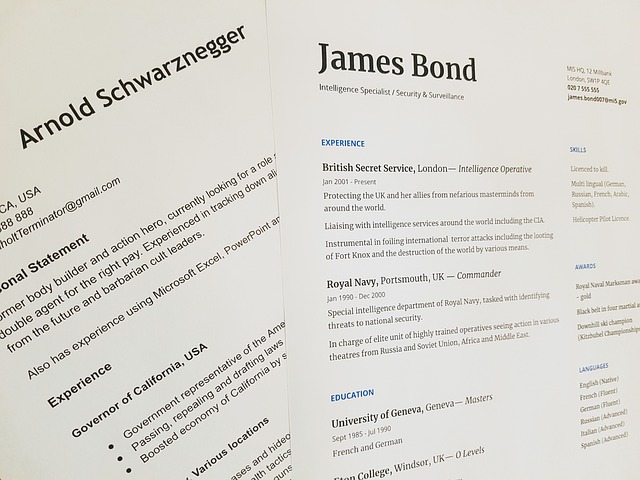The key difference between a portfolio and a resume is that a portfolio is more detailed and has multiple pages, whereas a resume is only one or two pages long. A portfolio contains relevant videos, web pages, photographs, and graphs to show a person’s skills and abilities. Portfolios are only used for certain jobs. A resume, on the other hand, is a document that mentions the academic qualifications, skills, experience, and achievements of a person. Both portfolios and resumes should be kept updated.
Key Takeaways
- A portfolio is a collection of information and material that provides visual examples of a person’s professional skills and experience, while a resume is a document that summarizes a person’s talents, achievements, and skills.
- Portfolios are more detailed and lengthy, typically used by professionals such as photographers, artists, designers, writers, developers, and architects, while resumes are shorter and more concise, used across a wide range of industries.
- Both portfolios and resumes should be kept updated and tailored to the specific job application, showcasing the candidate’s suitability for the position.
What is a Portfolio?
A portfolio is a collection of information and material that gives visual examples of a person’s professional skills and experience. A portfolio includes details about a person’s skills, education, qualifications, training, experience, and beliefs. This is a very effective method of showcasing someone’s professional abilities and skills rather than providing only a description of it. Through a portfolio, the employer gets an idea about the quality of a person’s work and their interests. A portfolio, therefore, should always be kept updated with all the proof of a person’s skills and masterpieces, if there are any. It can include website links, illustrations, photographs, and videos as proof of professional capabilities.
Professionals such as photographers, artists, designers, writers, developers, and architects use portfolios to show their skills. At present, there are digital portfolios which is a contrast to the printed portfolios in the past. Digital portfolios can be easily shared with multiple people. New material can be added to them, and the layout too can be changed without any difficulty. Portfolios differ based on their presentation and the format.
Important Sections in a Portfolio
- Statement of originality – a small paragraph that says that the work a person has included in the portfolio is original
- Career summary -a description of what a person does by including the achievements and the expertise in the field
- Philosophy statement – includes a person’s motivations, beliefs and values
- Brief biography – information about the person.
- Resume – include the link or a copy of the previously supplied resume
- Work samples – include real-life samples of the best work and skills of the person
What is a Resume?
A resume is a document that summarizes a person’s talents, achievements, and skills. It also can be a short version of a person’s CV. A resume includes all the recent and relevant achievements, qualifications, skills, and experiences in reverse chronological order so that an employer can easily get an understanding of a candidate’s recent improvements and abilities relevant to the job.
A resume may include a cover letter as well. A person can include his skills in this cover letter as well to show why he suits the position. In the cover letter, the candidate can express his interest in the job applied for and the company. A resume will showcase the candidate’s suitability to work in that particular organization, and it should be in a way that depicts that a candidate is a well-rounded person.
Sections in a Resume
A resume is about one or two pages long and usually includes:
- An objective or summary statement – This is an introduction to who the person is. He can highlight all the relevant skills, qualifications, and achievements
- Work experience – work experience that is directly relevant to the specific job in reverse chronological order. This can also include volunteer jobs if they’re relevant
- Qualifications – This can include academic and professional qualifications in reverse chronological order
- Skills- can include both hard and soft skills that show the person’s suitability for the job
What is the Difference Between Portfolio and Resume?
A portfolio is a collection of information and material that gives visual examples of a person’s professional field, while a resume is a document that summarizes a person’s talents, achievements, and skills. The key difference between portfolio and resume is that a portfolio is more detailed and has multiple pages, while a resume is only one or two pages long.
Summary – Portfolio vs Resume
A portfolio is a collection of information and material that gives a visual example of a person’s professional field. It contains in-depth information on a person’s skills, experience, and achievements. Since it has all these, it is lengthy and takes more time to create. A portfolio is used to impress the employers in an interview and receive the job by showcasing that the candidate is an all-rounder with all the relevant skills and abilities. A resume is a document that summarizes a person’s talents, achievements, and skills. This is only one or two pages long and therefore does not take time to write. Usually, these are submitted to organizations along with a cover letter. Thus, this is the summary of the difference between portfolio and resume.
